Three Recordings by Don Johnson, with President Lincoln's Own Band and Kentucky Baroque Trumpets
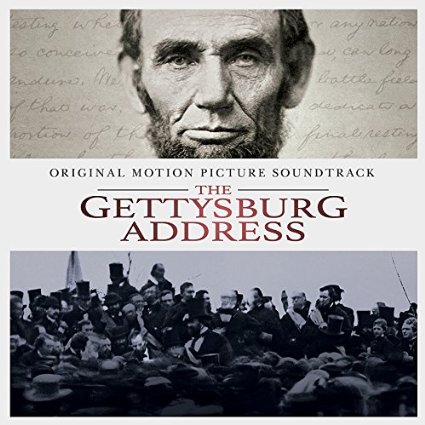 Don Johnson and the Kentucky Baroque Trumpets. Music for Trumpets, Strings, and Organ from Before 1700.
Don Johnson and the Kentucky Baroque Trumpets. Music for Trumpets, Strings, and Organ from Before 1700.
Recorded in Fairchild Chapel, at Oberlin College, Oberlin, Ohio, June 2013. The music on this CD is performed in meantone temperament; the chapel organ, opus 25 by John Brombaugh, employs a split-key keyboard to facilitate this tuning.
Don Johnson and President Lincoln’s Own Band. The Gettysburg Address: Original Motion Picture Soundtrack. Milan Records M2-36699, 2015.
Don Johnson and President Lincoln’s Own Band. President Lincoln’s Own Band.
These three CDs represent some of the fine recent work by Don Johnson and his colleagues. The Kentucky Baroque Trumpets recording of seventeenth-century music is a very fine effort. They are ably assisted by guest artists Friedemann Immer and John Foster. The program is a mix of some of the “greatest hits” of the natural trumpet repertoire as well as some lesser known compositions. The sonatas a’ 10 and a’ 7 by Christian Friederick Witt (1660–1716) embody the glorious sound of natural trumpets and the Kentucky trumpets are supported by a fine Baroque string ensemble and Steve Plank’s wonderful organ playing. These works, from about 1695, are a welcome addition to the repertoire. A more familiar work of this syle and equally performed is the Sonata No. 332 by Cesare Bendinelli. Getting to hear a number of the anonymous duets from the Modena collection of 1690 played by the likes of Immer, Foster, and Johnson is a real treat. John Foster exhibits beautiful and delicate playing on Sonata No. 1 by Giovanni Bonaventura Viviani (1638–93) and is equally matched by Friedemann Immer’s performance of the Sonata No. 2 a’ 4 by Pavel Josef Vejvanovsky (1633–93). Steve Plank again displayed his wonderful musicianship on three passagalli for solo organ by Giovanni Battista Ferrini (1601–74). The closing work on this fine recording is a vibrant work, but not a common piece on most natural trumpet programs. The Sonata a’ 10 by Anton Thomas Albertini (1660-1734) is brilliantly performed by the Kentucky Baroque Trumpets.
Trio Aenea: The Virtuoso Ophicleide
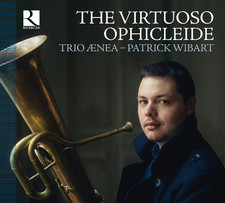 Patrick Wilbart and Trio Ænea, The Virtuoso Ophicleide, Ricercar/Outhere Music (RIC 362), 2015.
Patrick Wilbart and Trio Ænea, The Virtuoso Ophicleide, Ricercar/Outhere Music (RIC 362), 2015.
Patrick Wibart (ophicleide), Adrian Ramon (cornet), Lucie Sansen (piano), with guests Corentin Morvan (ophicleide), Oscar Abella Martín (ophicleide), Jean-Yves Guéry (vocal chant).
For years, the early brass world has marveled at the virtuosity, on both serpent and ophicleide, of French tuba player Patrick Wibart. He has appeared in many live performances and workshops, and tantalizing excerpts of his playing have been available on YouTube for several years. But the fact he had produced no commercial recordings was a great frustration for early brass enthusiasts yearning to hear more.
Finally, Wibart’s CD, The Virtuoso Ophicleide, has been released in late 2015. Wibart has modeled this recording on the salon style of performances popular in the nineteenth century, and engaged Pierre Girod, a musicologist specializing in beau chant français (French bel canto), as his advisor on period performance practice and the salon style in particular. Girod’s recommendations influenced the tempi chosen for the selections, the number of improvisations in the piano part, and the number of improvised embellishments and cadenzas for in the solo part, which are often not represented in the original scores.
Three Recordings by Les Sacqueboutiers de Toulouse
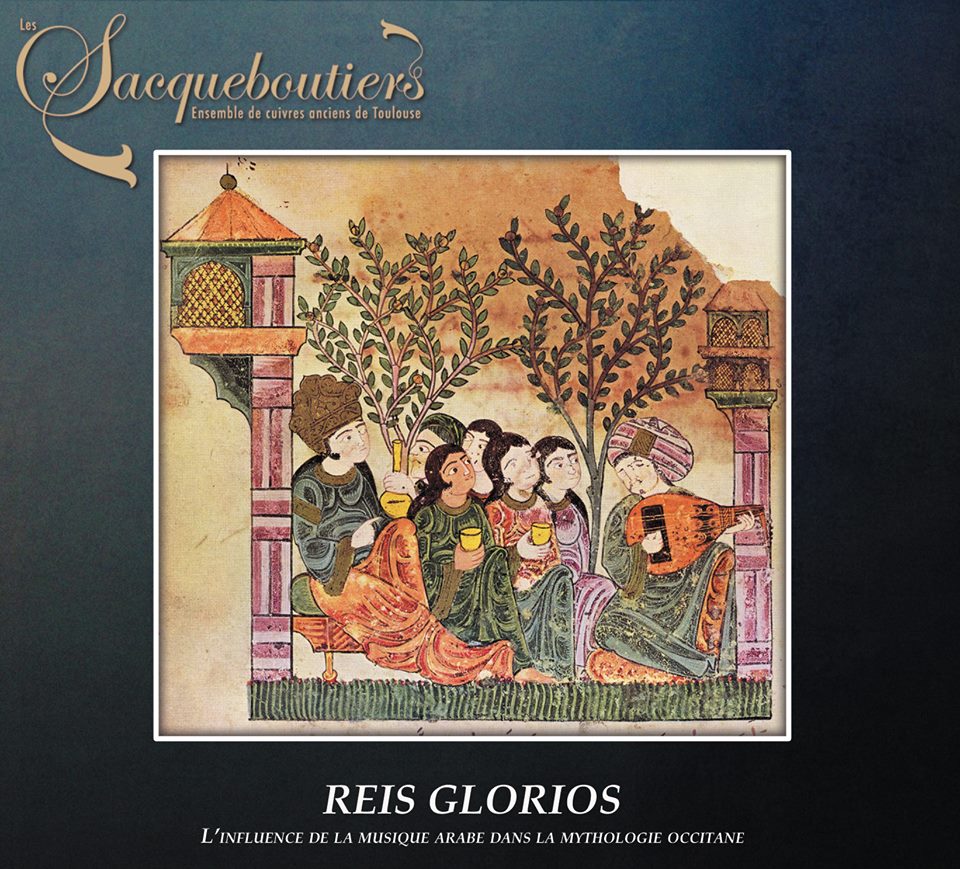
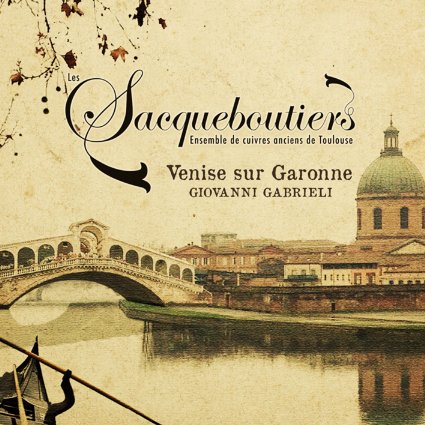
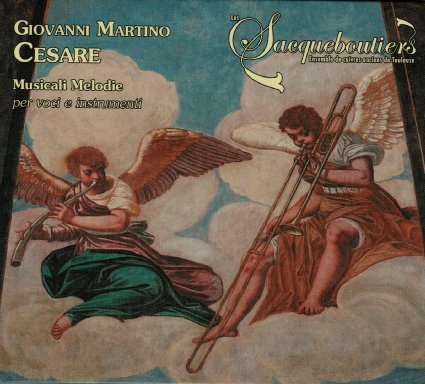 Les Sacqueboutiers de Toulouse. Reis Glorios L’Influence de La Musique Arabe Dans la Mythologie Occitane. Flora Records Flora 3916 (2015).
Les Sacqueboutiers de Toulouse. Reis Glorios L’Influence de La Musique Arabe Dans la Mythologie Occitane. Flora Records Flora 3916 (2015).
Jean-Pierre Canihac; cornetto, Philippe Canguilhem; chalemie, bombarde, medieval flute a bec, Daniel Lassalle; sacqueboute, Lucile Tesier; bombarde, medieval flute a bec, Jodel Grasset-Saruwatari; medieval lute, rebec, oud, arch lute, Florent Tisseyre, tambourine, daf, panderata, derbuouka, buche, cloches. Guest Musicians: Pierre Hammon; medieval flute a bec, double flute, bansouri, cornemuse, Driss El maloumi; oud, chant, Pierre-Yes Binard; vocal, Renat Jurie; vocal.
Les Sacqueboutiers de Toulouse. Venise sur Garonne Giovanni Gabrieli. Flora Records Flora 3314 (2014)
Cornetti: Jean-Pierre Canihac, Marie Garnier-Marzullo, Lluis Coll I Trulls, Regis Singlit, Tenor Trombones: Daniel Lassalle, David Locqueneux, Aymeric Fournes, Oliver Lachurie, Elias Toure, Xavier Sibra, Julien Miro, Hugo Liquiere, Bass Trombones: Fabien Dornic, Jean-Noel Gamet, Dulcians: Laurent Le Chenadec, Philippe Canguilhem, Daphne Franqin, Laurent Le Chenadec, Barbara Bajor, Theorbo: Matthias Sopaeter, Organ: Yasuko Bouvard, Maiko Kato, Kaori Kakai.
Les Sacqueboutiers de Toulouse. Giovanni Martino Cesare Musicali Melodie (1621). Flora Records Flora 3615 (recorded 1996, released 2015)
Cornetto: Jean-Pierre Canihac, Philippe Matharel, Tenor Trombone: Daniel Lassalle, Bass trombone and serpent; Bernard Fourtet, Organ and harpsichord; Jan Willem Jansen. Guest Musicians: Cornetto: Jean Tubery, Trombone: Stefan Legee, Nicolas Valade, Theorbo: Charles-Edouard Pantin, Violins: Brigit Taubl, Gunar Letzbor, Viola da Gamba: Lorenz Duftschmid, Harp: Christine Pluhar, Vocals: Guillemette Laurens, Marie-Claude Valin, Jean-Louis Comoretto, Jean-Yves Guerry, John Elwes, Bruno Boterf, Bernard Fare-Garrus, Yves Berge.
Vintage Cornet Recital by Mark Ponzo
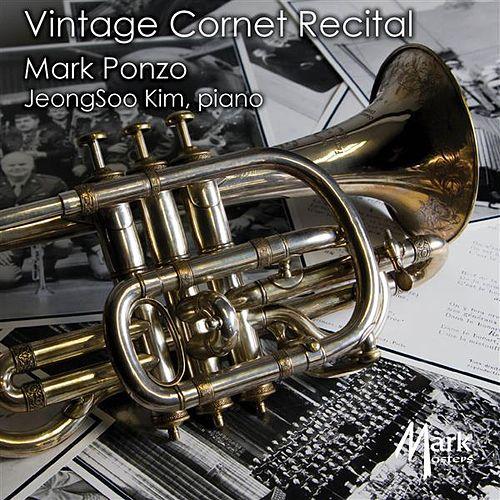
Mark Ponzo, cornet, and JeongSoo Kim, Piano. Vintage Cornet Recital. Mark Masters (51330-MCD), 2014.
I remember as a high school student searching in vain to find good recordings of various cornet solos on the contest lists. The problem was always either the liberties taken with the parts by the cornetists or the use of a brass band as an accompanimental ensemble. Of course, little did I know that they were originally written for use with brass bands: I just wanted to hear them the way I was going to play them and for my own practice purposes. It would seem, based on the liner notes, that Mark Ponzo experienced much the same thing and likely crafted this CD to fill just such a niche.
Perhaps the best endorsement for this CD is that it is an ideal listening experience for the student. Ponzo does not resort to needless embellishment or flashy playing (though the playing is artful to be sure), instead confining himself to the written music for the most part. His cornet playing is expressive and his accompanist, JeongSoo Kim, is sensitive and responsive to his ideas, but they do not go to the extremes heard in so many other recordings. Getting back to the student listener idea, I would not hesitate to recommend this CD to someone experiencing (or wishing to play) golden-age cornet solos for the first time. The recording gives us fine playing and an enjoyable listening experience.
My only criticism is one that could easily have been fixed in the liner notes (which are limited in content). Ponzo notes his enthusiasm for collecting antique cornets and there are hints that he here plays on one or more of his favorite cornets from that collection. Yet nothing indicates what instrument he plays (or if he is also playing on an antique mouthpiece). It would have been nice to know, if only for authenticity’s sake (and for making the rest of us jealous of his collection!). In any case Ponzo gives us a great, even prototypical, cornet sound throughout.
-- Bryan Proksch
La Luchesina by His Majesty's Sagbutts and Cornets
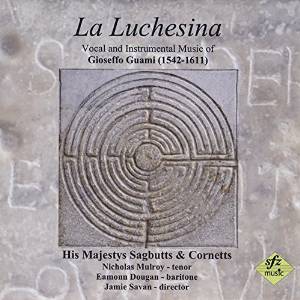
His Majestys Sagbutts and Cornetts, La Luchesina: Vocal and Instrumental Music of Gioseffo Guami (1542–1611), sFz Music (0115), ASIN: B00YCTUDKM, 2015.
Jamie Savan, director; Nicholas Mulroy, tenor; Eamonn Dougan, baritone; Jamie Savan: treble cornett by John McCann, alto cornett by CyberZink, mute cornett by Serge Delmas, tenor cornett by Christopher Monk; Jeremy West: treble cornett by Matthew Jennejohn; Helen Roberts: treble cornett by Paolo Faniciullacci, tenor cornett by Christoph Shuler; Gawain Glenton, treble cornett by Matthew Jennejohn, alto cornett by Serge Delmas; Adam Woolf, alto and tenor sackbuts by Ewald Meinl; Abigail Newman, alto and tenor sackbuts by Ewald Meinl; Stephen Saunders, bass sackbut by Ewald Meinl; Miguel Tantos Sevillano, tenor sackbut by Egger Instruments; Keith McGowan, dulcian by Graham Lyndon Jones; Jan Waterfield: organ by Henk Klop Orgelbouw, supplied and tuned by Keith McGowan.
Tuning: a=466Hz, ¼ comma mean-tone temperament. Recorded in St. Brandon’s Church, Brancepeth, 26-28 February, 2014.
The magnificent music of Gioseffo Guami is presented on this latest recording by His Majestys Sagbutts and Cornetts, which features the vocal arts of tenor, Nicholas Mulroy and baritone, Eaamonn Dougan. Jamie Savan has assumed the role of director now and offers excellent liner notes describing the importance of Guami’s music. HBS listeners will hear many similarities to the music of Gabrieli in Guami, and for good reason: Gabrieli knew him in Bavaria and was one of many musicians who enthusiastically recommended Guami for the position of first organist at St. Mark’s in Venice. The present recording is a combination of instrumental and vocal/instrumental works. The word “inspired” comes to mind. This listener finds himself just taking one deep, relaxed breath of air after the next while hearing the recording.
First of all, there is an overall sound which is true for each track: refined, burnished, warm, heartfelt. This is true for slow passages as well as the technical passage. There simply is no “rough edge” anywhere.
The group makes ample use of alto and tenor cornets. They can be heard especially in the Canzon vigesimaquinta and La Guamina. Regarding brilliantly played passagi, interest must be directed to La Battaglia. Generally, pieces with this title are rapid-fire displays of technical virtuosity, often with more accentuated articulation. Not so on this recording. HMSC offers an almost subdued affect which actually makes the technical passages all the more outstanding, but in a truly refined way.
Their performance of La Grave (Jeremy West playing the top part) is exemplary: the height of delicate, thoughtful phrasing—entirely befitting this absolute musical gem. Jamie Savan’s mute cornett playing on La Todeschina is exquisite in its phrasing and shading of dynamics and articulation. Attention should be paid in In die resurrectione to how beautifully the cornetti, especially Jeremy west on the top line, blend with the voices, smoothly weaving in and out, always supporting yet deferring to the voices.
I highly recommend this CD to our HBS members. His Majestys Sagbutts and Cornetts continue to offer recordings of the highest artistic level. This is a truly noble recording. It is an inspiration.
James Miller
Eleven by Rook
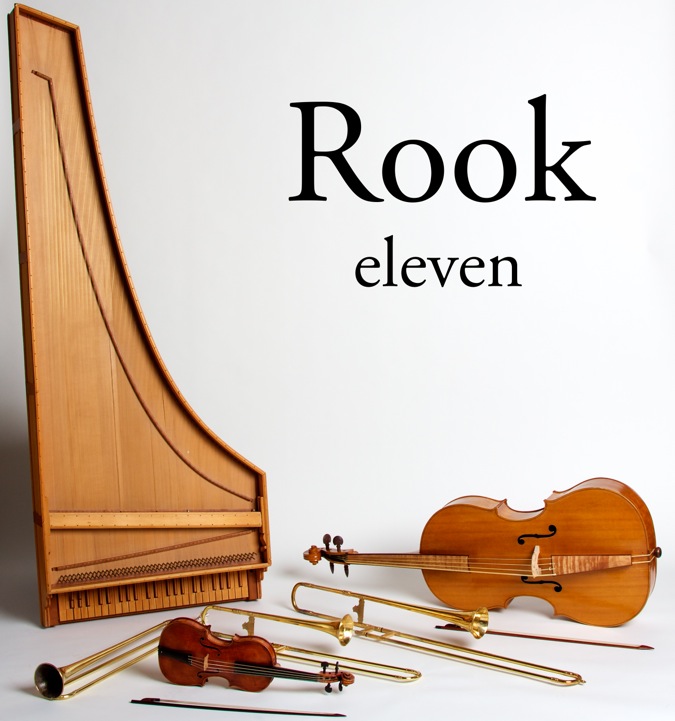
Rook, Eleven, Rook Early Music LLC / Rook (888295187572), 2015. http://www.rookearlymusic.com/eleven.html
Jakob Hansen, violin; Paul Von Hoff, trombone and slide trumpet; Jeremy David Ward, bass violin; Mark Shuldiner, harpsichord; Bill Baxstresser, cornetto; Violin by Sebastian Maria; Tenor Trombone by Egger after Sebastian Hainlein, Nuremburg, 1632; Alto Trombone by Egger after Heironimus Starck, Nuremburg, 1670 (used for Bassano); Slide Trumpet by Geert Jan van der Heide after Hans Merling painting, 15th c (used for Willaert); Mouthpieces by Geert van der Heide.
Tuning at ¼ comma meantone, A=440, Recorded July 15-18, Alice Millar Chapel, Northwestern University
Rather scant liner notes (which can be downloaded by following the above link) explain the purpose of Rook: “attempting to understand what type of musical experience was valued by musicians 400 years ago can work as a catalyst for moving beyond prevailing and prescribed ideas of interpretation and ensemble….The trombone and bass violin adapted the facility and speed of the violin. String instruments adapted the variety of articulation and dynamic shaping available to the brass.” This listener is more an accomplished performer on cornetto and natural trumpet than a knowledgeable scholar of the issues outlined above and to other particulars of string instruments mentioned in the notes. Perhaps others will be able to appreciate these above-stated goals of Rook. What is apparent, though, is the virtuosic playing of all players, with special emphasis on technical speed. This is in part due to the preponderance of very animated music by such composers as Dario Castello and Bartelomeo de Slema y Salverde. It may seem that the program is weighted more heavily in extroverted affect, but I invite the listener to Ingiustissimo amor by Constano Festa (c 1485-1545) as an example of a truly refined and heartfelt performance. Cornettist Bill Baxstresser is listed as a special guest. No information is provided regarding his instrument or mouthpiece. He offers sensitive playing on an interesting Pavan by Samuel Scheidt. There is no denying the technical skill of the members of Rook. Their program offers many little-performed works. I invite our members to hear this recording.
James Miller
Radek Baborák, Orquestrina
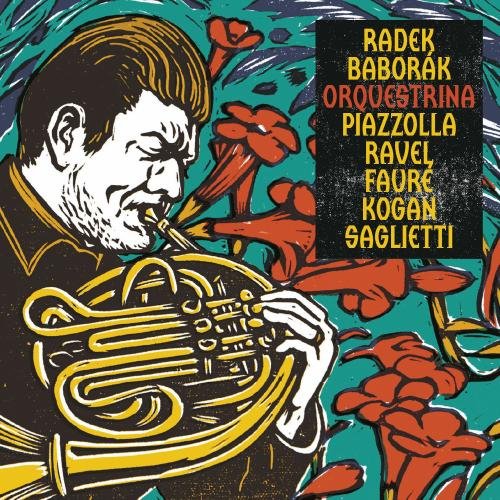
Radek Baborák, Orquestrina (Animal Music ANI 044-2) 2014. http://www.animalmusic.cz/katalog/radek-baborak-orquestrina
While not the standard fare reviewed here for the HBS, Radek Baborák’s recent CD Orquestrina presents very compelling horn playing together with third-stream twists on some well-known classics. The recordings include Ravel’s Boléro and Fauré’s Pavane, a suite of Hassidic tunes by Lev Kogan, and Piazzolla’s Histoire du Tango, among other things. Baborák’s title derives from a small Portuguese dance orchestra, a fitting title given the feel of the entire album and the type of ensemble used (three hornists, a handful of strings, and a clarinetist are the heart of the ensemble). It might be easy to dismiss the recording as “yet another third-stream thing,” but in its defense the arrangements are really spot on and the playing equally so, with the result that the entirety is compelling. The rendition of Fauré’s Pavane as a horn solo, beautifully played, will have you convinced that it was the composer’s original intent. While there is not much in the way of variety of style—it is almost non-stop third stream—there are quite a few interesting repertoire decisions that help to vary things more than might be imagined. My only real criticism is that the producer was not quite as careful about his microphone distances as needed on occasion (the bass clarinet’s breathing in the Piazzolla’s quieter moments gets a bit distracting, for instance, and sometimes you can hear more of the keys clicking than is right). This fault aside, the CD is a good listen that presents some great playing. Did I mention some very well-done artwork for the liner notes too?
--Bryan Proksch, Lamar University
Gabriele Cassone, Di Trombe Guerriere
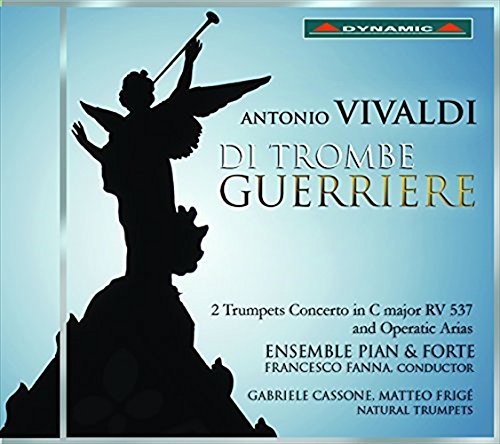
Ensemble Pian & Forte, Di Trombe Guerriere (Dynamic CDS 7710) 2015.
Gabriele Cassone and Matteo Frigé, trumpet
Francesca Cassinari, Marta Fumagalli, Roberto Balconi, and Mauro Borgioni, voice
The author of the liner notes for this CD, Alessandro Borin, seems to be under the impression that trumpeters think Vivaldi somehow neglected the instrument. We all know about the famous Concerto for Two Trumpets and the ever-popular Gloria, but if there were still any doubters out there as to Vivaldi’s interest in the trumpet this recording will hopefully lay such mistaken views to rest. Of course, Gabriele Cassone and Matteo Frigé play a fine (apparently obligatory) rendition of the Concerto (I think I’ve got about a dozen of them now) as well as the popular “Combatta un Gentil Cor” from the opera Tito Manlio; they also play a bunch of other far more obscure selections for trumpet gleaned from Vivaldi’s operas.
The really interesting part of the recording for the brass enthusiast, historically speaking at least, are the seven trumpet and voice duets taken from six of Vivaldi’s many operas. Selected from Montezuma, Il Teuzone, Tito Manlio, Catone in Utica, Scanderbeg, and La Fida Ninfa, they provide a much more complete picture of Vivaldi’s trumpet writing than one might have expected. My impression based on this recording was that the composer had a handful of tricks up his sleeve for the trumpet and that he rotated these in and out from opera to opera. That is, there is just enough variety in his melodies to differentiate one from another, though there are enough similarities to the point that you may get the musical version of déjà vu if listening in one sitting. There are also two concertos on this CD that are not for trumpet at all (RV 554a for Organ, Violin, and Cello and RV 779 for Oboe, Violin, Organ and Chalumeau); certain sections in both reminded me of Vivaldi’s trumpet writing: perhaps this is why these particular works were included, though the liner notes are silent as to the underlying reasoning.
The playing (and singing) on this recording are very good indeed, but with a caveat. I am under the distinct impression that Cassone and Frigé play without modern vent holes, but the CD does not provide specific information. So either they play on true natural trumpets very well (I presume this to be the case) or they have vented instruments with occasional minor tuning lapses (which seems unlikely given Cassone’s towering reputation). Somewhat confusing the issue is that the photos of Cassone and Frigé in the booklet are at odds with one another: Cassone poses with an unvented trumpet while Frigé clearly holds a vented instrument. I must confess to not being too interested in debating the merits or reopening old debates, but there is still something impressive about a well-done recording on natural trumpets such as I presume this one is.
Cassone here provides us with food for thought by revealing a larger and more representative cross-section of Vivaldi’s works for trumpet than is usual. The playing is idiomatic in every way, ranging from the delicate obbligato lines typical of a trumpet accompanying an operatic voice to the obnoxious noise expected from a wartime trumpet in a battle scene. Those who want to play (or hear) the famous Concerto for Two Trumpets from a broader and more considered musical perspective will need to buy this CD right away. Those who just like Vivaldi and/or the natural trumpet simply on their own merits should probably do the same!
Bryan Proksch, Lamar University



